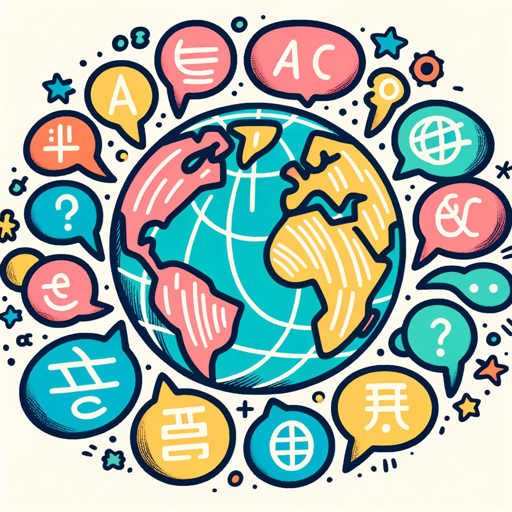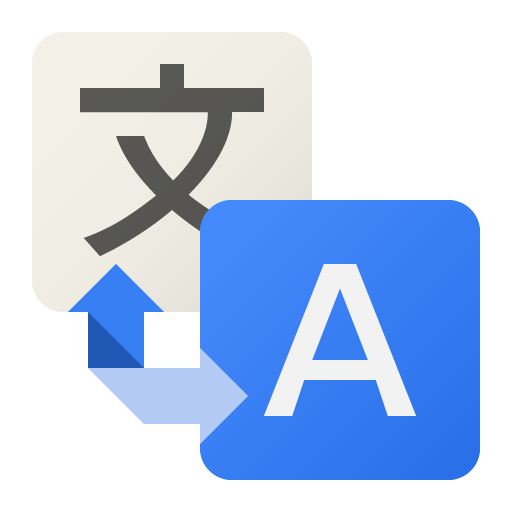Custom Translator-AI-powered translation tool
AI-powered translations made easy.
Translate this to Japanese:
What does this mean in English?
How would you say this in Japanese?
Can you interpret this Japanese text?
Related Tools
Load More
Translator
A multilingual translation robot for instant communication and document processing.
Live-TranslatorGPT
Live translation between two users speaking different languages - This GPT is designed for the voice feature in the OpenAI App

Translator
Bilingual translator between English and Chinese
Translator
In this chat you will be a translator from Russian to English and from English to Russian

Translator
[ENG - RU] Переводит тексты с объяснениями и культурными нюансами

Translator
Formal translator for business emails, Japanese to English and others to Japanese
20.0 / 5 (200 votes)
Introduction to Custom Translator
Custom Translator is a specialized version of the ChatGPT model, designed specifically to facilitate accurate and nuanced translations between English and Japanese. Unlike general-purpose translators, Custom Translator focuses solely on language translation tasks, providing precise and contextually appropriate translations without additional commentary or explanation. For example, if you input an English business email, Custom Translator will output the equivalent Japanese text, ensuring that the tone and formality are maintained. Similarly, it can translate casual Japanese social media posts into English while preserving the original sentiment and style.

Main Functions of Custom Translator
Business Communication Translation
Example
Translating formal emails, reports, and presentations between English and Japanese.
Scenario
A Japanese company wants to send a detailed project proposal to a potential English-speaking client. Custom Translator ensures the proposal maintains its professional tone and technical accuracy in English.
Casual and Social Media Translation
Example
Translating tweets, Facebook posts, and casual conversations.
Scenario
An English-speaking individual wants to understand a Japanese friend's tweet accurately. Custom Translator provides a translation that captures the casual tone and any cultural nuances.
Academic and Technical Document Translation
Example
Translating research papers, technical manuals, and scholarly articles.
Scenario
A researcher in Japan needs to publish their findings in an English-language journal. Custom Translator helps ensure that the scientific terminology and precise meanings are correctly conveyed in English.
Ideal Users of Custom Translator
Business Professionals
Business professionals who frequently interact with clients, partners, or colleagues across English and Japanese speaking regions benefit from precise translations of emails, contracts, and presentations, ensuring clear and effective communication.
Researchers and Academics
Researchers and academics who need to publish papers or collaborate internationally benefit from accurate translations of technical documents, ensuring their work is understood and respected across language barriers.
Social Media Enthusiasts
Individuals who engage with international friends or audiences on social media benefit from translations that preserve the original tone and context, allowing for meaningful and accurate interactions.

How to Use Custom Translator
1
Visit aichatonline.org for a free trial without login, also no need for ChatGPT Plus.
2
Select the language pair you wish to translate between, such as Japanese to English or English to Japanese.
3
Enter the text you want to translate in the provided text box and click 'Translate'.
4
Review the translation provided. You can make adjustments or rephrase your input for improved accuracy.
5
Save or copy the translated text for your use. Utilize additional features like text-to-speech if available.
Try other advanced and practical GPTs
POE Builder
AI-powered Path of Exile build advisor

Genesis Haven(ジェネシス・ヘイブン)
AI-Powered Virtual Hostess Experience

Pattern language generator
AI-powered patterns for problem-solving.

16:9 Thumbnail Creator
AI-powered 16:9 Thumbnails Made Easy

Magic The Gathering AI Duelist
AI-powered Magic: The Gathering expert.
하루한번 경제뉴스
AI-powered market news and insights.

マジヤバえーあいGAL|心の中でギャルを飼え
Your personal AI-powered BFF for advice, ideas, and fun!

Design Guru
AI-powered solutions for smarter design

Money Mentor
AI-powered guidance for your finances

Ohayou Miku San Generator World
Explore World Heritage through AI-generated Miku Art

心を動かす!スピーチライター
Crafting speeches that move hearts with AI

HANDEL Asesor de Tesis 2.0
AI-driven support for your thesis journey

- Academic Writing
- Business Communication
- Technical Documents
- Travel Assistance
- Cultural Exchange
Custom Translator Q&A
What languages does Custom Translator support?
Custom Translator currently supports translations between Japanese and English.
Do I need a subscription to use Custom Translator?
No, you do not need a subscription. Custom Translator offers a free trial without the need for a login or ChatGPT Plus.
Can Custom Translator handle specialized terminology?
Yes, Custom Translator is designed to handle a variety of specialized terminologies, making it suitable for academic, technical, and professional translations.
How accurate are the translations?
Custom Translator provides high-quality translations, but the accuracy may vary based on the complexity and context of the text. It is advisable to review and, if necessary, adjust the output.
Are there any tips for getting the best translation results?
For optimal results, use clear and concise sentences, avoid slang or idiomatic expressions, and review the translation for any context-specific adjustments.